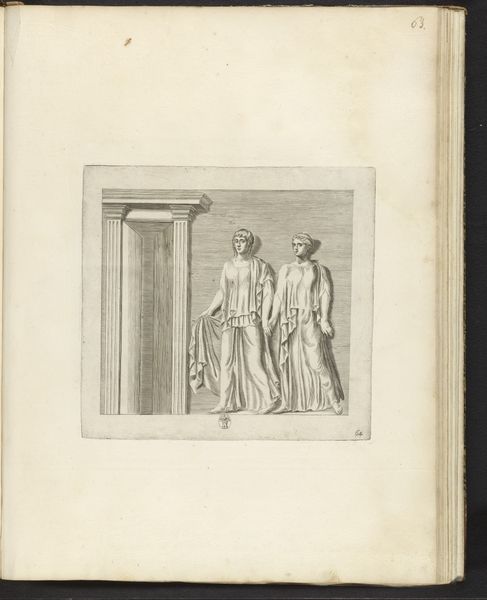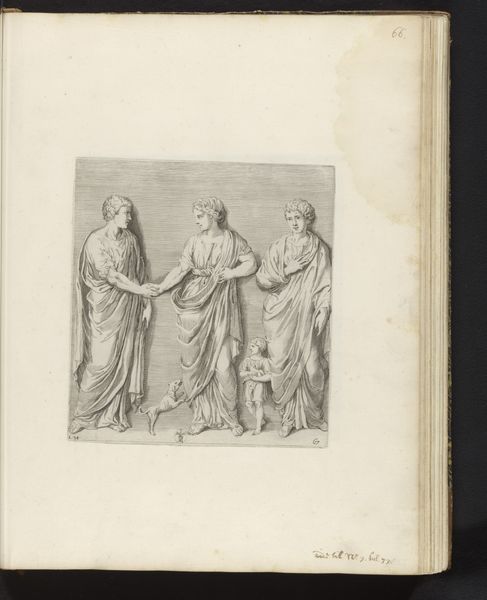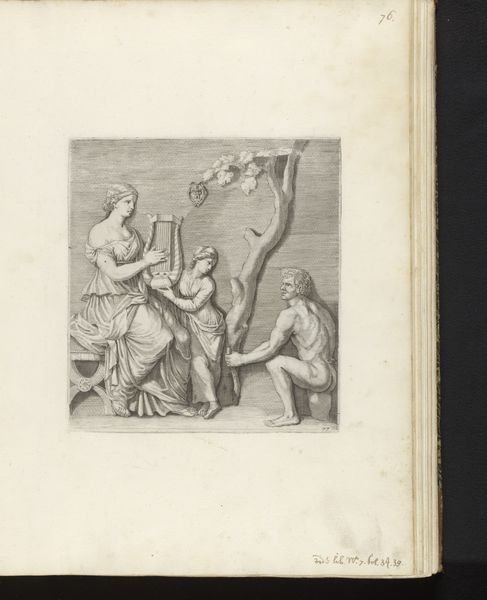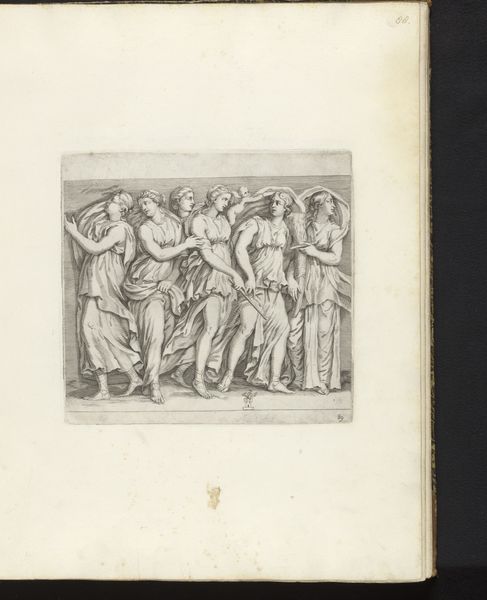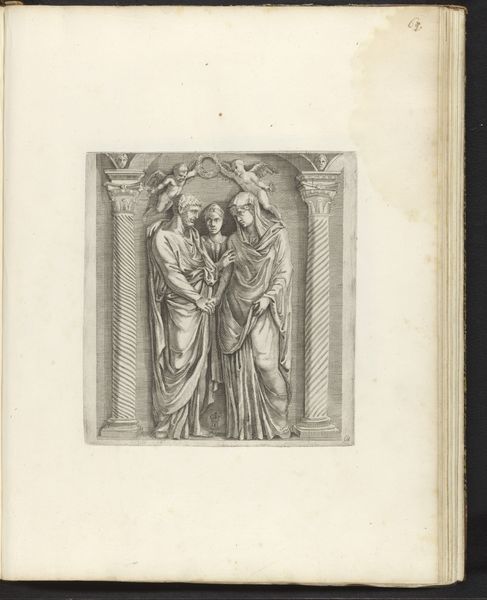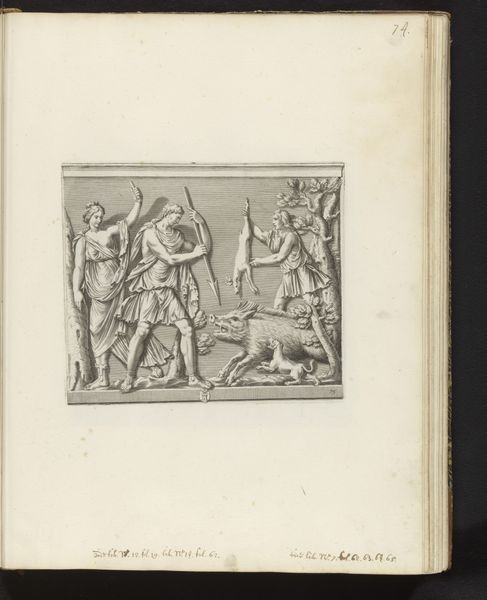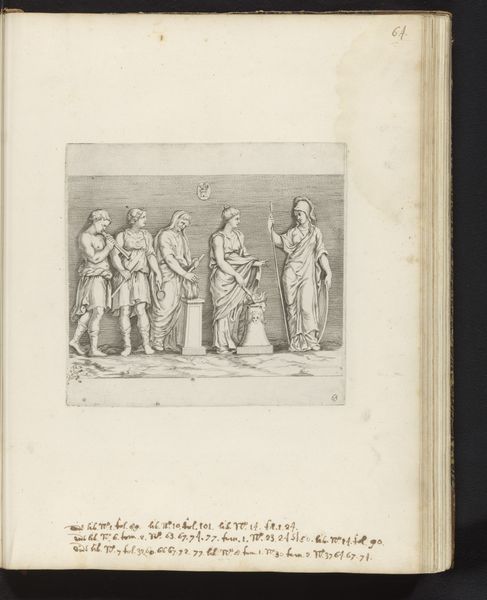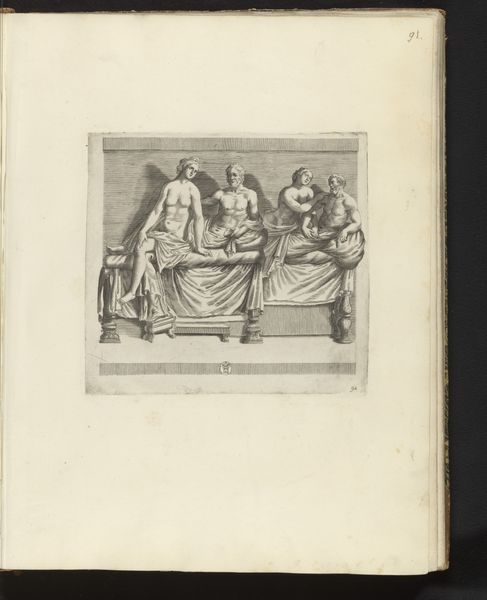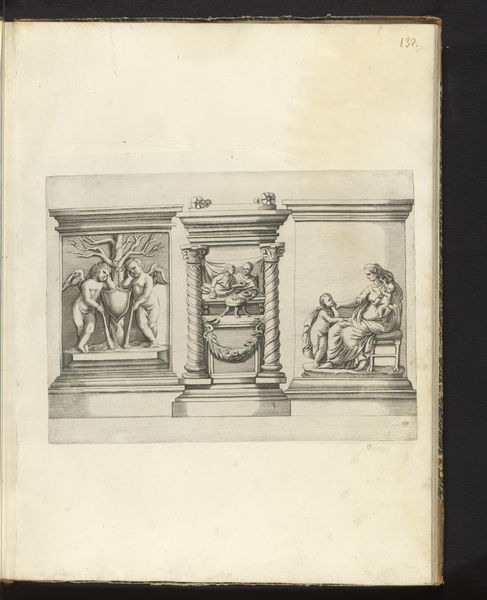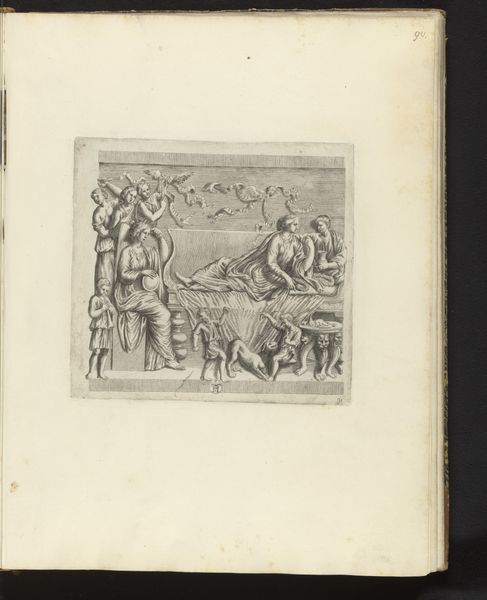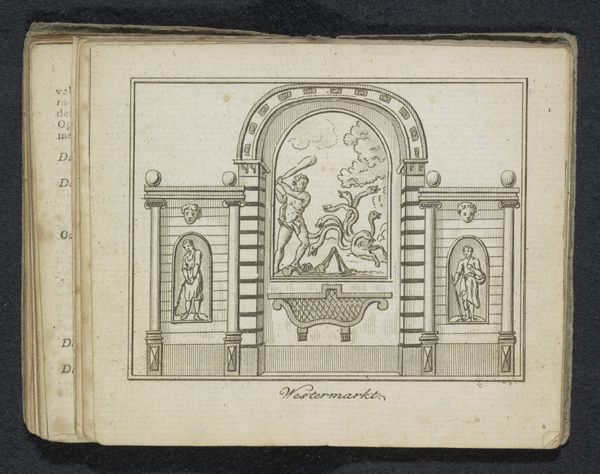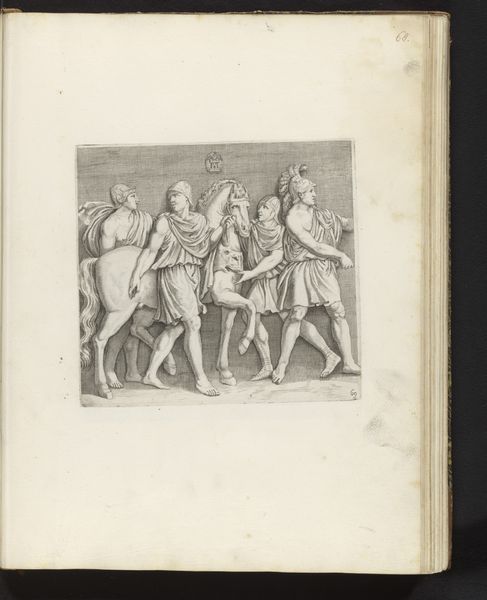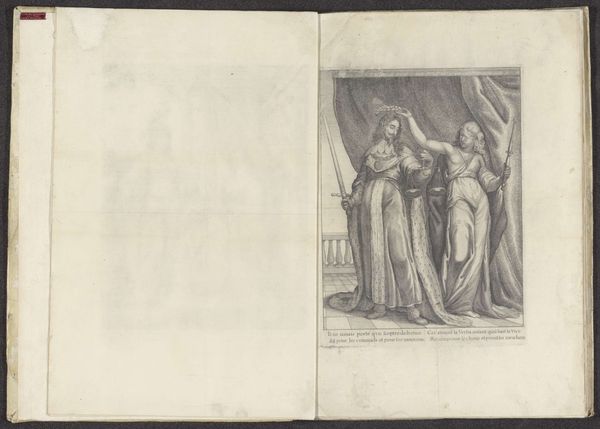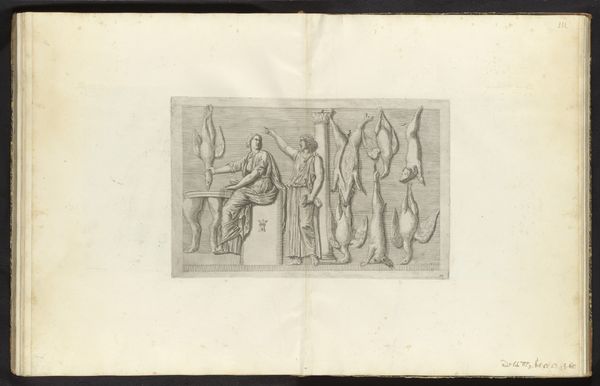
print, engraving
#
baroque
# print
#
greek-and-roman-art
#
classical-realism
#
figuration
#
history-painting
#
academic-art
#
engraving
Dimensions: height 225 mm, width 242 mm
Copyright: Rijks Museum: Open Domain
Curator: This engraving, titled "Bas-reliëf met drie figuren," was created between 1636 and 1647 by Lucio Mosconi. It evokes the aesthetics of classical antiquity. Editor: My first impression is one of theatrical solemnity. The figures seem caught in mid-performance, striking poses against the architectural backdrop. The light feels carefully controlled to highlight their forms. Curator: That theatricality isn't accidental. Baroque art, like this, often utilized classical themes to explore power and rhetoric. Printmaking played a crucial role in disseminating these visual messages across Europe. Copies could easily spread knowledge and propaganda about antiquity. Editor: Look at the central figure's laurel wreath. This is a loaded emblem with associations ranging from Apollo to emperors, each suggesting victory, status, and divine favour. The female figure's veiled head and the offering she presents add to this air of sacred ritual. Curator: Indeed. And while evoking this sense of solemnity and historical narrative, pieces like this were often displayed within specific social contexts, like wealthy patrons' collections. It's an art form deliberately linking present-day authority with the grandeur of the past. Consider how academic art helped solidify power through idealized imagery. Editor: Right, by connecting itself to an older, idealised past. But these are all carefully considered and controlled choices, reflecting not just aesthetics but deep-seated societal assumptions around nobility and authority, rendered accessible through print. Even that carefully rendered drapery tells a story. Curator: Precisely. Print culture could disseminate ideas widely, it could also restrict access and reinforce hierarchical structure of society and its aesthetic ideals, depending on who could produce, disseminate, and collect art. Editor: Analyzing these details reminds me that even in what seems like a simple print, a complex visual vocabulary speaks volumes about the period's obsessions and aspirations. Curator: Yes, thinking about this piece reveals the powerful role that art plays in creating and perpetuating social meaning.
Comments
No comments
Be the first to comment and join the conversation on the ultimate creative platform.
